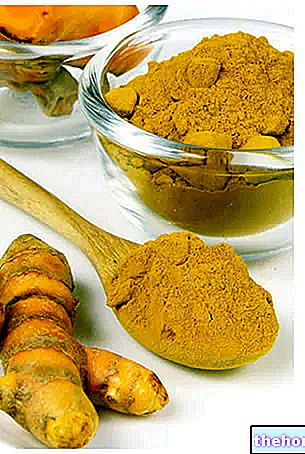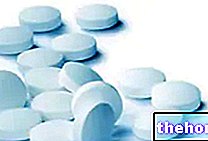First name: Allium sativum L.
Family: Liliacee
Garlic is one of the medicinal plants that have always been considered indispensable, as it has infinite health properties.
Garlic appears as a herbaceous plant from 30 to 80 cm high, which in the wild is perennial, while cultivated it propagates exclusively by vegetative means due to its sterility.
Garlic has an underground part consisting mainly of the bulb, covered with reddish casings and composed in turn of numerous smaller bulbs, the cloves, which provide the drug, that is the part used in the phytotherapeutic field.

The garlic bulb is one of the oldest and most popular remedies in folk medicine.
: this is released when the allinase enzyme acts on alliin, a colorless and tasteless compound which is the main component of the fresh drug.
Garlic releases its distinctive odor whenever it is "damaged", for example when chewing, cutting, or pressing; this is why whole cloves have no odor. In fact, in the intact cell there is no smell. alliin and the other sulfoxides are confined to the cytoplasm, while its hydrolytic enzyme - allinase - is present only in the vacuole: the destruction of the cellular structure of garlic thus frees the aforementioned enzyme, which determines the hydrolysis of the sulfoxides and their transformation into disulfides and trisulphides .
Allicin is a remarkable antibiotic, whose strong inhibiting power on numerous types of bacteria (including those responsible for typhus) was already noted in 1858 by Louis Pasteur.
In addition to allicin, garlic contains other antibacterial substances such as garlicina; it is rich in minerals and trace minerals, such as magnesium, calcium, phosphorus, iodine and iron; there are traces of zinc, manganese, selenium, vitamin C (only in fresh garlic), provitamin A, vitamins B1-B2-PP; it contains hormone-like substances and enzymes (lysozyme and peroxidase).
look healthy and promote hair growth; this effect is due to the presence of phytinic acid, which on the one hand binds mineral substances and on the other hand can be transformed into inositol, a substance similar to vitamins capable of stimulating cell growth.
Garlic also contains alkaloids that perform an action similar to that of insulin, lowering the level of blood sugar: for this reason, garlic is considered a valid support in therapies against diabetes and other diseases related to the metabolism of sugars.
Garlic strengthens the immune system and acts as a powerful bactericide on the whole organism; is a very powerful vermicide, a regulator of blood pressure (it acts by causing vasodilation of arterioles and capillaries), reduces the risk of sclerosis of the arteries, prevents platelet aggregation (consequently the formation of thrombus), regulates the level of cholesterol and triglycerides in the blood.
One of the most important and interesting properties of garlic is that concerning its characteristic antibiotic function (bacteriostatic and bactericidal action against both Gram + and Gram-): it is in fact a valid antibiotic to be used in cases where the intestinal bacterial flora has been altered by previous treatments. Unlike synthetic antibiotics, garlic - while dealing with pathogenic bacteria - not only does not attack the saprophytic bacterial flora, but even favors their restoration.
This plant is an excellent remedy against bloating and abdominal cramps, and is also very useful in case of acute and chronic diarrhea or mucus-bloody stools (dysentery).
Clinical studies have reported the "action of garlic also against"Helycobacter pylori, the bacterium partly responsible for gastric ulcer and the development of stomach cancers.
Another property of garlic is to protect against dangerous heavy metals, very harmful substances that enter the body through smog, contaminated fruit and vegetables; the organs most affected by heavy metals are the lungs, kidneys, liver and nervous system, with effects ranging from the immediate symptom up to pathological manifestations several years later. How does garlic act in this sense? It acts as a chelator: in practice, the sulfur compounds present among the garlic molecules bind stably to the mercury, lead and cadmium molecules present in the organism, which in this way are easily eliminated.
Other articles on "Garlic: Properties and Phytotherapy"
- Garlic
- Garlic: side effects and therapeutic indications
- Properties of garlic - Phytotherapy
- Garlic in Herbalist: properties of Garlic
- Allicin
















.jpg)











